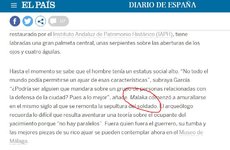Μοναδικό εύρημα κρυμμένο στην Επισκοπή Σικίνου - Ασύλητος τάφος επιφανούς γυναίκας γεμάτος κοσμήματα
Εντυπωσιακά ευρήματα ήρθαν στο φως στη Σίκινο καθώς κατά την διάρκεια των εργασιών αποκατάστασης του μνημείου της Επισκοπής ανακαλύφθηκε ασύλητος τάφος. Γεμάτος κοσμήματα και πολύτιμα αντικείμενα, ανήκε όπως εκτιμάται σε επιφανή γυναίκα της αρχαίας κοινωνίας του νησιού. Ο κιβωτιόσχημος τάφος είχε τοποθετηθεί σε τυφλό σημείο των υπογείων του μνημείου ώστε να διαφύγει της σύλησης και των τυμβωρύχων.
Ο πλούτος των κοσμημάτων που φορούσε η γυναίκα προδίδει ότι ήταν επιφανές πρόσωπο της Σικίνου. Σύμφωνα με την ανακοίνωση του υπουργείου Πολιτισμού: «Από τον τάφο περισυνελέγησαν χρυσά περικάρπια, δακτυλίδια, περιδέραιο, μια πόρπη με ανάγλυφο καμέο, μαζί με γυάλινα και μεταλλικά αγγεία, άλλα μικροευρήματα καθώς και οργανικά σπαράγματα της ενδυμασίας της νεκρής».
Το κτήριο του σημαντικού μνημείου της Επισκοπής Σικίνου είναι ένα καλοδιατηρημένο ναόμορφο μαυσωλείο της όψιμης αρχαιότητας που αργότερα μετατράπηκε σε τρουλλαίο βυζαντινό ναό και αποτελεί ένα εντυπωσιακό παλίμψηστο αρχαιότητας και μεσαίωνα, μοναδικό στον ελλαδικό χώρο. Κατά την διάρκεια των εργασιών αποκατάστασης του μνημείου ήλθε στο φως η ασύλητη ταφή γυναίκας.
Αναλυτικά το υπουργείο αναφέρει πως από τον τάφο περισυνελέγησαν χρυσά περικάρπια, δακτυλίδια, περιδέραιο, μια πόρπη με ανάγλυφο καμέο, μαζί με γυάλινα και μεταλλικά αγγεία, άλλα μικροευρήματα καθώς και οργανικά σπαράγματα της ενδυμασίας της νεκρής. Οι πρώτες εκτιμήσεις οδηγούν στο συμπέρασμα ότι το εντυπωσιακό μαυσωλείο ανεγέρθηκε για να στεγάσει τον τάφο αυτής της γυναίκας. Ειδικό ενδιαφέρον παρουσιάζει η συσχέτιση, με άγνωστο μέχρι σήμερα, ταφικό επίγραμμα από το μνημείο που παραδίδει το γυναικείο όνομα
Νεικώ.







